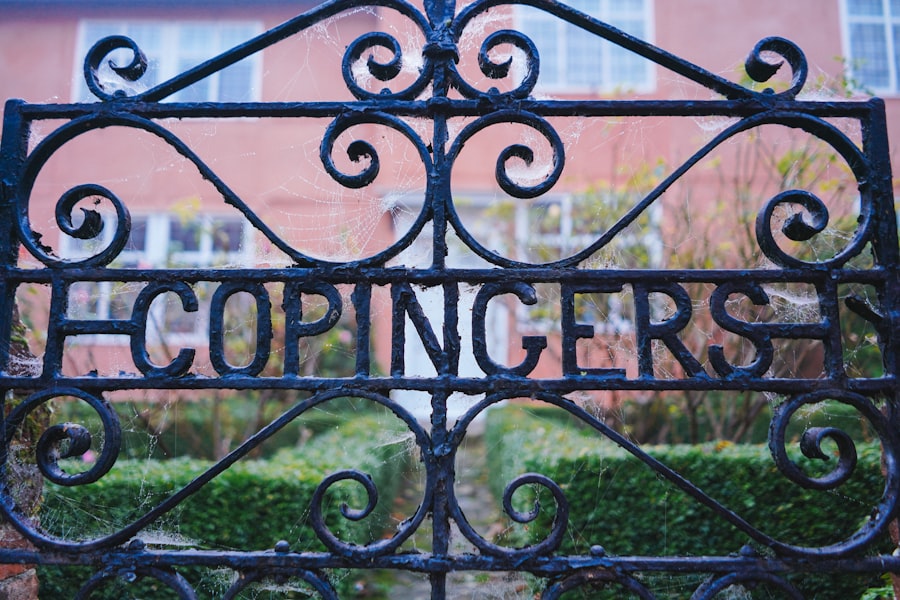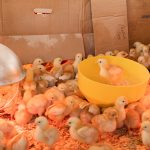Integrating dogs and chickens on the same property requires careful planning and management to ensure the safety and well-being of both species. Dogs, as natural predators, and chickens, as prey animals, have inherently different instincts that must be considered when attempting to create a harmonious living environment. Proper training and supervision of dogs are essential to establish peaceful coexistence with chickens.
When introducing dogs to chickens, it is crucial to assess the individual temperaments and personalities of both animals. Dogs vary in their prey drive, with some exhibiting strong hunting instincts while others may be more indifferent to the presence of chickens. Similarly, chickens can range from skittish and easily stressed to confident and assertive when confronted with dogs.
Understanding the natural behaviors and instincts of both dogs and chickens is fundamental to creating a safe environment for cohabitation. With appropriate measures in place, dogs and chickens can successfully share the same space, potentially offering mutual benefits such as companionship, protection, and pest control.
Table of Contents
Key Takeaways
- Keeping dogs and chickens together can be successful with proper training and supervision.
- Dogs have a natural prey drive that can be managed through training and socialization.
- Training dogs to coexist with chickens involves positive reinforcement and consistent boundaries.
- Creating a safe and secure environment for chickens is essential to their well-being.
- Supervising interactions between dogs and chickens is crucial to prevent accidents and aggression.
Understanding the Natural Prey Drive of Dogs
Understanding Prey Drive in Different Breeds
Some breeds, such as terriers and hounds, are known for their strong prey drive and may be more inclined to chase and potentially harm small animals like chickens. On the other hand, breeds that were originally bred for herding or guarding livestock may have a lower prey drive and be more inclined to see chickens as part of their “pack” or “flock.”
Managing Prey Drive for Safe Coexistence
It’s important for dog owners to recognize and respect their dog’s natural instincts while also providing appropriate training and management to ensure the safety of other animals. This may involve teaching dogs to control their impulses, redirecting their focus onto more appropriate activities, and providing plenty of mental and physical stimulation to help satisfy their natural hunting instincts in a non-harmful way.
Training for Peaceful Coexistence
By understanding and working with a dog’s prey drive, it is possible to train them to coexist peacefully with chickens and other small animals. With patience, consistency, and positive reinforcement training, dog owners can help their dogs learn to live harmoniously with other animals, making for a more peaceful and enjoyable living environment for all.
Training Dogs to Coexist with Chickens

Training dogs to coexist with chickens requires patience, consistency, and positive reinforcement. It’s important to start training as early as possible, ideally when the dog is still a puppy, but even adult dogs can learn new behaviors with the right approach. Basic obedience training, such as teaching dogs to come when called, stay, and leave it, is essential for managing their behavior around chickens.
Positive reinforcement techniques, such as using treats, praise, and play as rewards for desired behaviors, can help dogs learn to associate chickens with positive experiences rather than potential prey. In addition to obedience training, it’s important to provide dogs with plenty of mental and physical stimulation to help satisfy their natural instincts in a non-harmful way. This may include activities such as interactive toys, puzzle feeders, scent work, and structured play sessions.
By keeping dogs mentally and physically engaged, they are less likely to become bored or frustrated and more likely to coexist peacefully with chickens. It’s also important to supervise interactions between dogs and chickens closely during the training process, gradually increasing the amount of freedom and trust as the dog demonstrates appropriate behavior.
Creating a Safe and Secure Environment for Chickens
Creating a safe and secure environment for chickens is essential for their well-being and protection from potential predators, including dogs. This may involve providing a sturdy coop or henhouse with secure latches and locks to prevent unauthorized access by dogs or other animals. Additionally, it’s important to provide a fenced outdoor area or run where chickens can safely roam and forage without the risk of being chased or harmed by dogs.
The fencing should be tall enough to prevent dogs from jumping over or digging under it, and it should be buried at least a few inches into the ground to prevent digging. In addition to physical barriers, it’s important to provide chickens with plenty of hiding spots and elevated perches where they can escape from potential threats. This may include shrubs, bushes, or other vegetation where chickens can take cover if they feel threatened.
Providing multiple feeding and watering stations can also help reduce competition and potential conflicts between chickens, which can in turn reduce stress and make them less vulnerable to predation by dogs. By creating a safe and secure environment for chickens, dog owners can help minimize the risk of conflicts and ensure the well-being of both animals.
Supervising Interactions Between Dogs and Chickens
Supervising interactions between dogs and chickens is essential for ensuring the safety of both animals. Even well-trained dogs with a low prey drive can become excited or aroused by the presence of chickens, especially if they are not used to being around them. It’s important to start with short, controlled interactions between dogs and chickens, gradually increasing the amount of time and freedom as the dog demonstrates appropriate behavior.
During these interactions, it’s important to observe the dog’s body language for signs of arousal or predatory behavior, such as stiffening, staring, or fixating on the chickens. If at any point the dog shows signs of arousal or predatory behavior, it’s important to redirect their focus onto a more appropriate activity, such as playing with a toy or practicing obedience commands. It’s also important to provide plenty of positive reinforcement for calm and non-threatening behavior around chickens, using treats, praise, and play as rewards for desired behaviors.
By supervising interactions closely and providing appropriate guidance and feedback, dog owners can help teach their dogs to coexist peacefully with chickens while also ensuring the safety of the birds.
Dealing with Aggressive Behavior in Dogs

Understanding the Causes of Aggression
In some cases, dogs may exhibit aggressive behavior towards chickens despite training and supervision efforts. This may be due to factors such as a strong prey drive, past experiences with small animals, or lack of socialization with chickens at an early age.
Seeking Professional Help and Managing Behavior
If a dog displays aggressive behavior towards chickens, it’s important to address the issue promptly and seek professional help if necessary. This may involve working with a qualified dog trainer or behaviorist who can assess the underlying causes of the aggression and develop a customized behavior modification plan. In addition to seeking professional help, it’s important to take steps to manage the dog’s behavior around chickens in the meantime. This may involve keeping the dog on a leash or in a separate area when chickens are present, gradually reintroducing them under controlled conditions as they demonstrate improved behavior.
Providing Mental and Physical Stimulation
It’s also important to provide plenty of mental and physical stimulation for the dog to help reduce frustration and redirect their focus onto more appropriate activities.
Creating a Safer Environment
By addressing aggressive behavior in dogs promptly and effectively, dog owners can help create a safer environment for both their pets and their chickens.
Conclusion and Tips for Successful Coexistence
In conclusion, keeping dogs and chickens together requires careful planning, training, and management to ensure the safety and well-being of both animals. Understanding the natural prey drive of dogs is essential for developing effective training strategies that help them coexist peacefully with chickens. Creating a safe and secure environment for chickens is also important for minimizing the risk of conflicts with dogs.
Supervising interactions between dogs and chickens closely is essential for ensuring the safety of both animals, while dealing with aggressive behavior in dogs promptly can help create a safer environment for everyone. To ensure successful coexistence between dogs and chickens, it’s important to start training early, provide plenty of mental and physical stimulation for dogs, create a safe environment for chickens, supervise interactions closely, and address aggressive behavior promptly. By following these tips and taking a proactive approach to managing their pets’ behavior, dog owners can create a harmonious living environment where dogs and chickens can coexist peacefully and even form bonds of companionship.
With patience, consistency, and positive reinforcement, it is possible for dogs and chickens to live together in harmony on the same property.
If you’re looking to keep dogs from chickens, you may also be interested in learning about the mating season for turkeys. Understanding the behavior and needs of different poultry can help you create a safe and harmonious environment for all your animals. Check out this article on mating season for turkeys to expand your knowledge on poultry breeding and behavior.
FAQs
What is the purpose of keep.dogs from chickens?
The purpose of keep.dogs from chickens is to protect chickens from potential harm or stress caused by dogs. It aims to create a safe and peaceful environment for the chickens to thrive.
How can dogs pose a threat to chickens?
Dogs can pose a threat to chickens by chasing, attacking, or even killing them. Their predatory instincts and natural behavior can cause distress and harm to the chickens.
What are some ways to keep dogs away from chickens?
Some ways to keep dogs away from chickens include using physical barriers such as fences or enclosures, training dogs to coexist peacefully with chickens, and using deterrents such as noise or scent-based repellents.
Why is it important to keep dogs away from chickens?
It is important to keep dogs away from chickens to ensure the safety and well-being of the chickens. Additionally, reducing stress and potential harm from dogs can help chickens to lay eggs, grow, and thrive in a peaceful environment.
Are there any legal implications for dogs attacking chickens?
In many areas, there are legal implications for dogs attacking chickens. Dog owners may be held responsible for any harm caused by their dogs to livestock, including chickens. It is important for dog owners to be aware of and comply with local laws and regulations regarding the protection of livestock.
Meet Walter, the feathered-friend fanatic of Florida! Nestled in the sunshine state, Walter struts through life with his feathered companions, clucking his way to happiness. With a coop that’s fancier than a five-star hotel, he’s the Don Juan of the chicken world. When he’s not teaching his hens to do the cha-cha, you’ll find him in a heated debate with his prized rooster, Sir Clucks-a-Lot. Walter’s poultry passion is no yolk; he’s the sunny-side-up guy you never knew you needed in your flock of friends!








